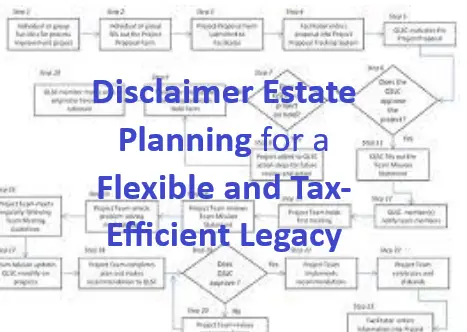Qualified Disclaimers: Flexible Estate Plans
A Flexible Estate Plan allows decisions to be made in the future when more is known. Qualified Disclaimer Estate Planning is flexible and tax-efficient. Pay attention if you have beneficiary forms that control how assets pass to your heirs.
The most flexible and tax-efficient way to give pre-tax retirement accounts to your family is pretty simple once you get your beneficiary form filled out correctly and your family educated. Thinking about death and taxes is not fun; both happen eventually. Make a plan because someone is going to pay those taxes.
If you are married and have more than 1-2 million in your 401k or IRA (pre-tax retirement plans) and want to leave an inheritance, qualified disclaimer planning is flexible and tax-efficient. With minimum planning, you can save a huge amount in taxes and give your spouse and children the flexibility to split your wealth.
The Purpose of Qualified Disclaimer Planning?
Since pre-tax retirement plans (401k, 403b, IRAs) pass outside of wills and probate (via beneficiary forms), you must consider all of your beneficiary forms every year. Estate planning is complicated, but one thing you need to understand is beneficiary forms and your retirement accounts.
It is seldom appropriate to name your estate as the beneficiary of these pre-tax retirement accounts. Doing so would drag them back into probate, which is inefficient and costly.
Next, trusts are poor beneficiaries of pre-tax accounts. If a trust is the beneficiary of your IRA and you don’t need to control the money from the grave, chances are you needlessly lose 40% due to taxation. For more information, read my blog on the 10-year rule and retirement accounts.
So, who should be beneficiaries of your pre-tax retirement accounts? Well, it depends on the purpose of the money.
The purpose of disclaimer planning is to allow the family member who needs the money to access it in the most tax-efficient way. Qualified disclaimer estate planning is tax-efficient and flexible.
An Example of Disclaimer Planning
Fill out your beneficiary forms with your spouse as the primary beneficiary and your kids as equal contingent beneficiaries. Then, tell your kids and spouse what to do.
What should they do? Your spouse should take the money needed and disclaim the rest to the kids to start a 10-year stretch.
Since you have no idea when you are going to die, disclaimer planning allows your loved ones nine months after your death to decide how to pay less in taxes. The goal is to give your heirs two different 10-year stretches. You gave them enough to spike their tax bracket even over ten years… this way, you might have 20.
A qualified disclaimer is not a gift from the primary beneficiary to the contingent beneficiary. Qualified when talking about retirement accounts means that it is subject to ERISA. Qualified when talking about disclaimers means that it is specifically allowed by the tax code not to count as a gift.
What Makes it Qualified?
A qualified disclaimer is specifically one allowed in the tax code.
Anyone who inherits property can disclaim it, which allows the asset to go to the contingent beneficiaries.
For a disclaimer to be qualified, it must hit the following criteria:
- Writing: the refusal must be in writing.
- Timing: the disclaimer must be made within nine months after the date of death unless the disclaiming beneficiary is under age 21.
- No Acceptance: the disclaiming beneficiary must not have accepted any interest in the benefits. This does not include a final yearly RMD.
- No Control: the disclaiming beneficiary cannot control to whom the property passes.
The Disclaimer Need Not be for the Entire Amount
There are three ways to disclaim an asset:
- Full Disclaimer. This is pretty self-evident.
- Pecuniary (or dollar figure) Disclaimer. You can specify how much is disclaimed in dollars.
- Fractional Disclaimer. Here you can disclaim just a proportion of the account, say 10%, 50%, or 90%. Keep what you need, and pass on the rest.
Qualified Disclaimer Estate Planning for a Flexible and Tax-Efficient Legacy
A qualified disclaimer is an irrevocable refusal by a primary beneficiary to accept benefits or transfer of property. When done appropriately, the property passes to the contingent beneficiaries as if the primary beneficiary is dead.
The disclaimer can be complete or partial. In essence, disclaimer estate planning allows your family to decide the best way to split up your pre-tax retirement accounts after you die. Flexibility and the ability to control taxes are key. Remember, there is an optimal way to leave money to charity and an optimal way to leave money to your heirs.
There is little reason that most folks shouldn’t participate in disclaimer planning for their assets that pass via beneficiary forms.
